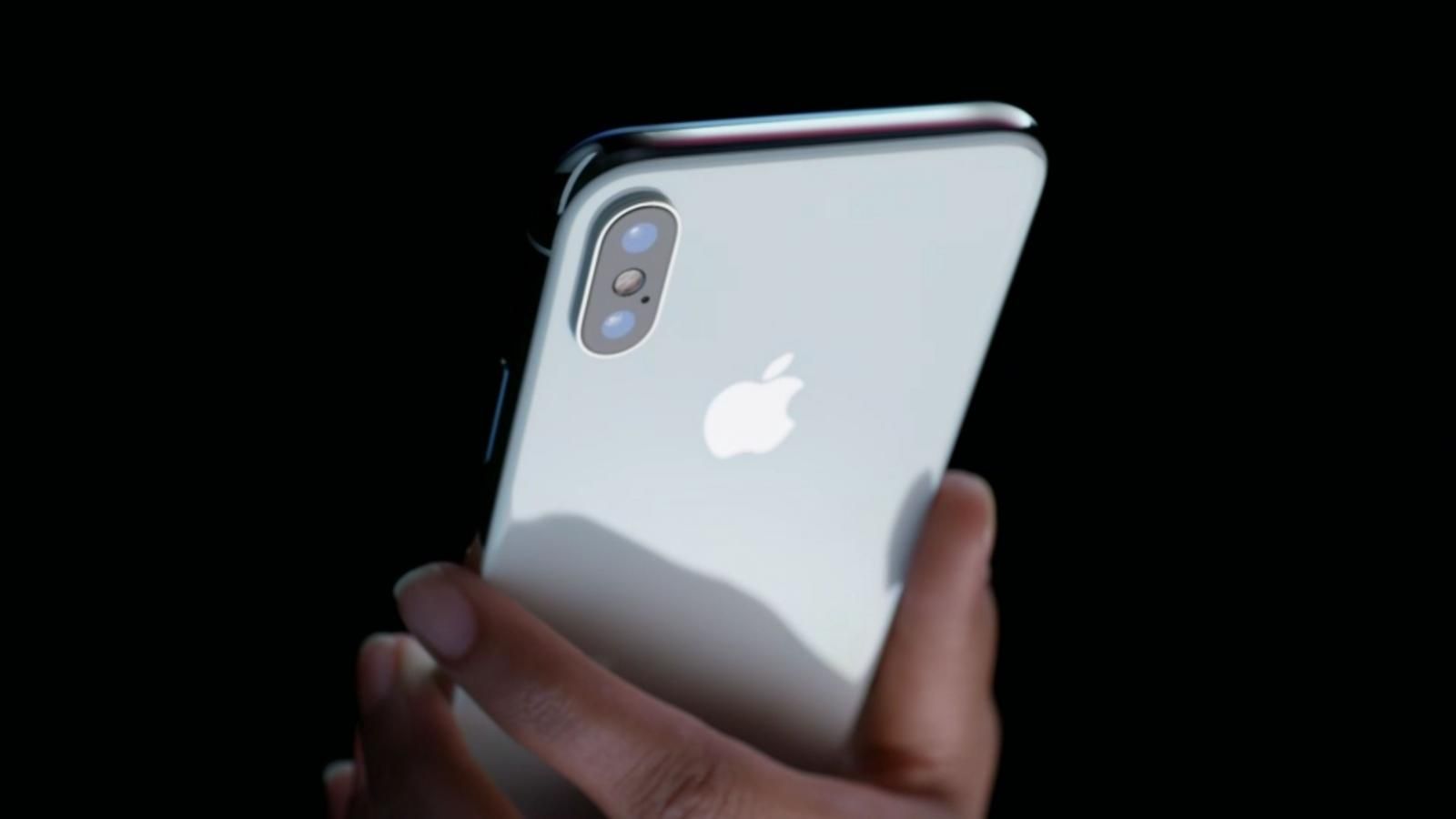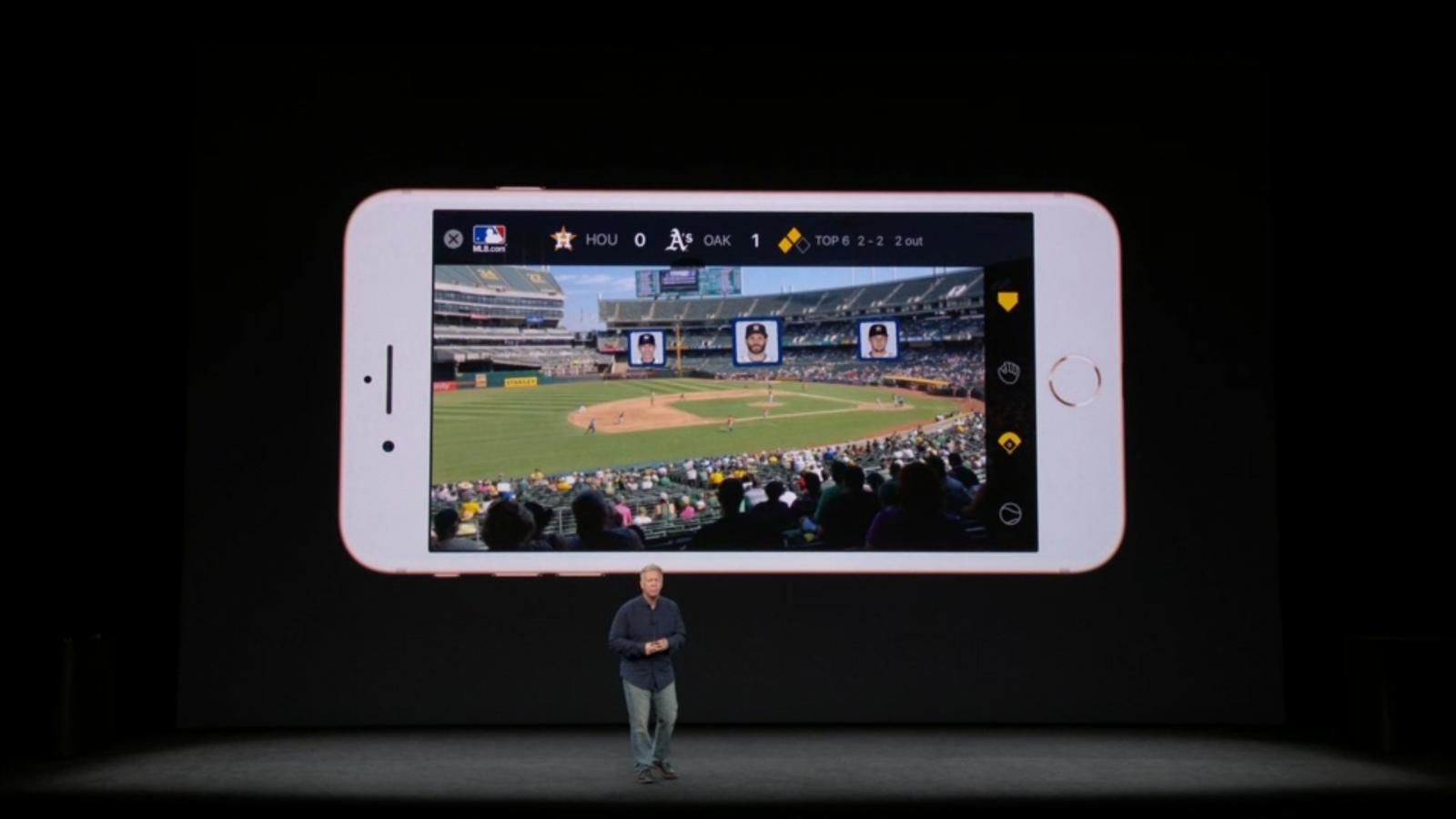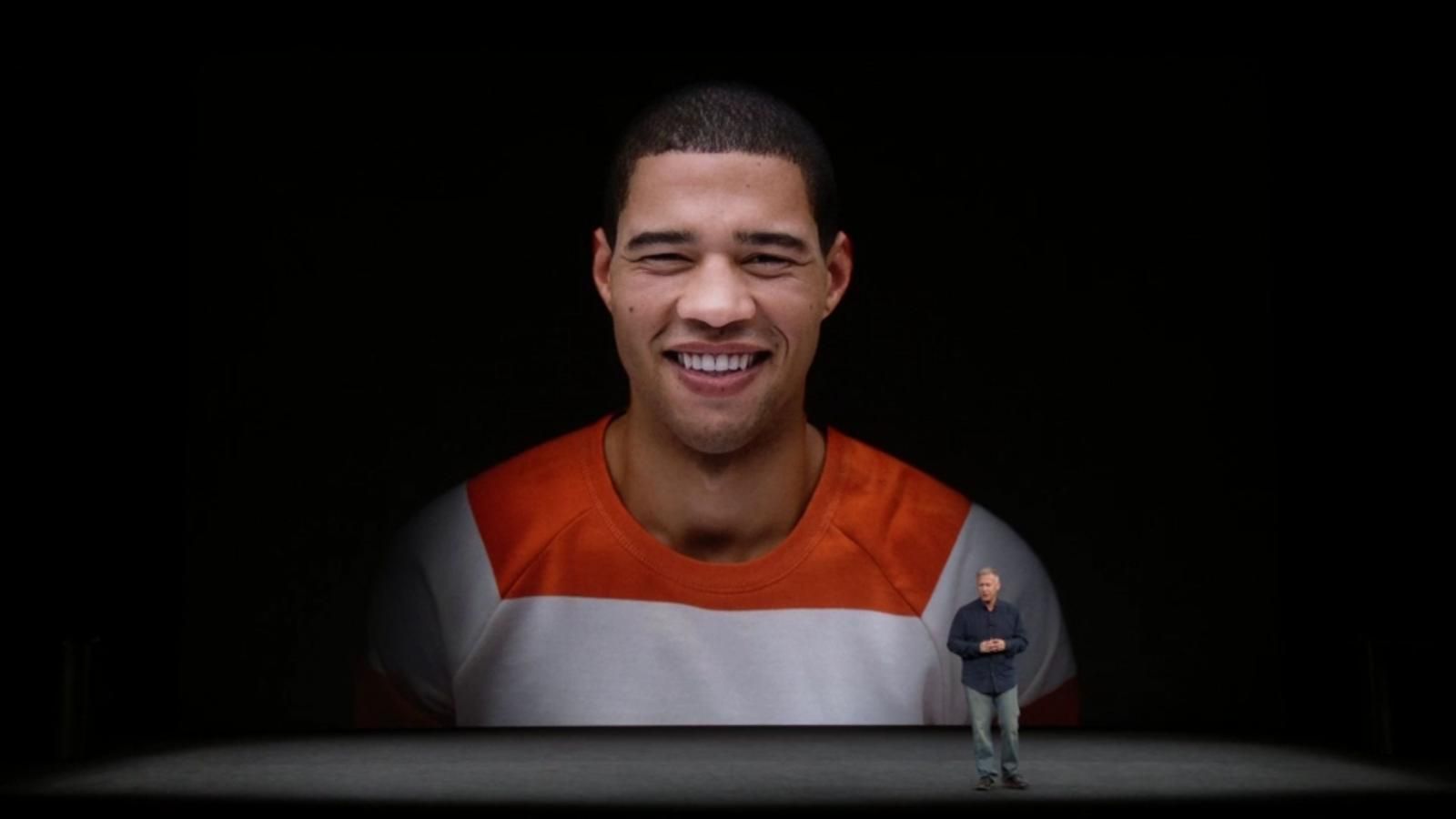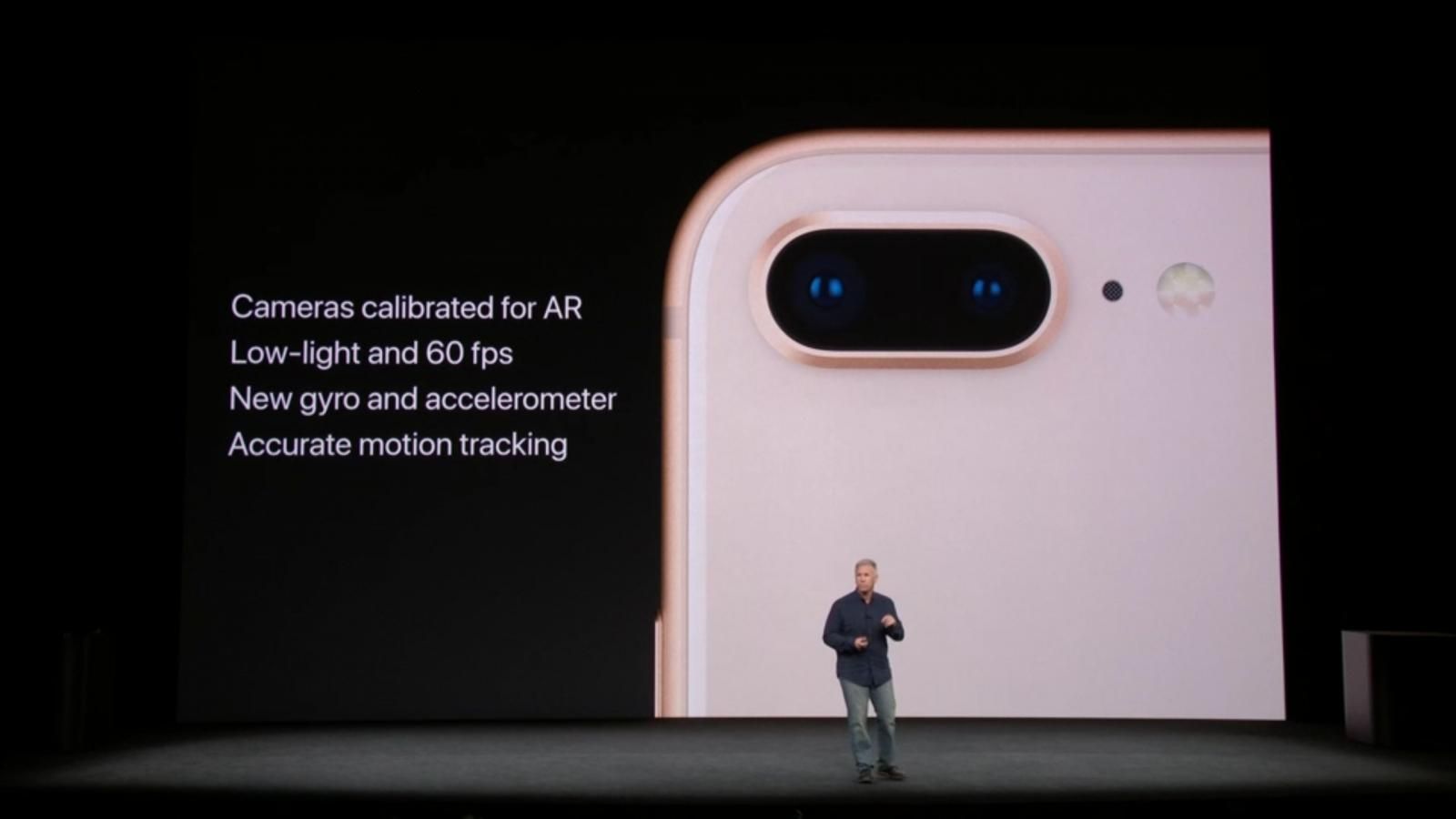The camera experience on the iPhone 8 devices and the iPhone X is getting a new image signal processor and a whole new background software suite.
The main sensor used between all setups is a 12-megapixel unit with 83 percent more light reception and better noise reduction. The iPhone 8 Plus’s dual rear cameras feature an f/1.8 aperture on the “wide” angle lens and an f/2.8 aperture on the “telephoto” lens. The zoom lens on the iPhone X has an even faster f/2.4.
While only the wide-angle sensor on the iPhone 8 Plus is optically stabilized, both rear camera sensors on the iPhone X are. Both pairs of cameras are well-purposed and tuned for augmented reality tasks and apps with ARKit.
The newest software trick on the dual-camera systems is called “Portrait Lighting.” In addition to refining the focus of the subject (as was the main objective of Portrait Camera mode), live measurements will allow the ISP to affect the light on the contours of the face, even on the viewfinder in real time. Different conditions for stage lighting, natural sunlight and others are included. This mode is accessible in beta testing, details of which to come soon.
A front-side TrueDepth sensor will also allow for Portrait Camera selfies on the iPhone X.
Apple is wrapping videos captured on these new phones with a proprietary encoder for high resolution, lighter size files in 4K and 60fps or 1080p and 240fps or anywhere in between.
For more on the iPhone 8 and iPhone 8 Plus, see this link. For the iPhone X, see here. Pocketnow‘s coverage of these phones will include our signature Real Camera Review, coming soon.




